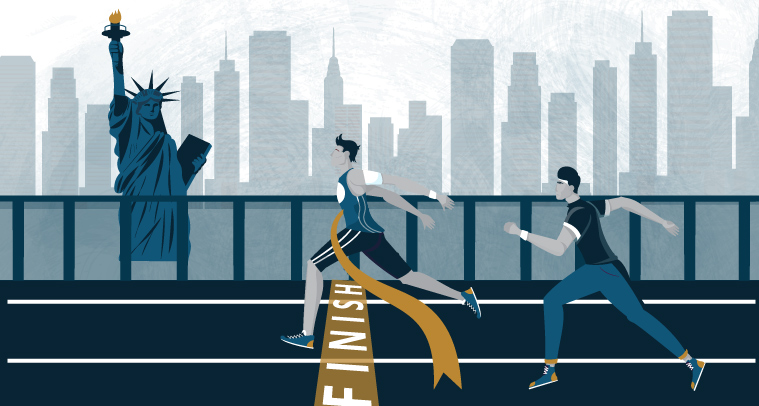
The new guidelines, shaped by the proposed settlement in the class-action lawsuit House v. NCAA, will take effect in the 2025-26 academic year.
Opportunities for US scholarships for international students
Around 790 new scholarships are being made available across the 40-plus NCAA sports, taking the total from around 500 to more than 1,200.
One of the big changes in US college sports is football, where the roster limit will increase from 85 to 105 players, allowing schools to offer up to 20 more scholarships.
The increase will allow more players to receive financial support in a sport where competition for scholarships can be fierce.
In baseball, the roster limit is set to increase to 34 from the current 11.7 scholarship limit.
Some of the proposed roster limits for 2025-2026 include:
- Men’s and women’s soccer: 28 scholarships available for each
- Women’s field hockey: 27 scholarships available
- Men’s and women’s track and field: 45 scholarships available for each
- Men’s and women’s golf: Nine scholarships available for each
- Men’s and women’s tennis: 10 scholarships available for each
What is the NCAA settlement deal?
The House v. NCAA lawsuit was filed in 2020 to challenge the NCAA's restrictions on athletes' name, image and likeness (NIL) compensation. Final approval of the settlement is expected on 7 April 2025.
The proposed settlement could see the NCAA paying damages totalling $2.78 billion to former US student-athletes dating back to 2016.
In the 2025-26 season colleges will be allowed to compensate their athletes directly for the first time. Student-athletes could be entitled to share up to 22% of their athletic department revenue, including money earned from media rights deals and ticket sales.
It isn't yet clear if international students will benefit from this revenue while studying in the US in terms of their student visas. They may, however, benefit from potentially earning larger scholarships.
The settlement also eliminates NCAA scholarship caps and sets new roster limits. Schools can offer as many scholarships as they have roster spots. However, no school will be required to use all the scholarships, and each one will decide how many scholarships to offer for each sport.
How to increase your chances of getting a US sports scholarship
While the NCAA’s changes are expected to see more scholarships available, there could also be more competition, especially for smaller sports like track and field.
Colleges may prioritise top-performing US athletes so international students will need to stand out even more to make the cut.
If you are hoping to secure a US sports scholarship, you will need to start the process early. If you are in Grade 10 or 11, now is the time to start. Don’t wait until you reach Matric or once you have finished high school because that will be too late.
Other things you can do include:
Research: Learn about division levels, read up about which colleges you’d like to attend and make sure you’re up to date with application deadlines. Make sure you understand the different organisations that govern US college sports.
See also: US college sport organisations: Comparing the NCAA, NAIA and NJCAA
Market yourself: Create a highlights video with the best clips of your game footage to stand out to coaches. Use social media to increase your chances of being recruited.
Be proactive: Reach out to coaches early and send them unique emails explaining why you're interested in their programme. Communication is key.
Academic requirements for international students
Don’t forget that it is not enough to excel at your chosen sport. You also need to focus on your academic performance.
International students need to meet the NCAA’s eligibility standards. These include specific academic and amateurism requirements.
For NCAA Division I and II you will need to:
- Graduate from high school
- Complete 16 core courses in high school
- Earn at least a 2.3 GPA in your core courses (2.2 GPA for Division II)
- Be an amateur athlete
